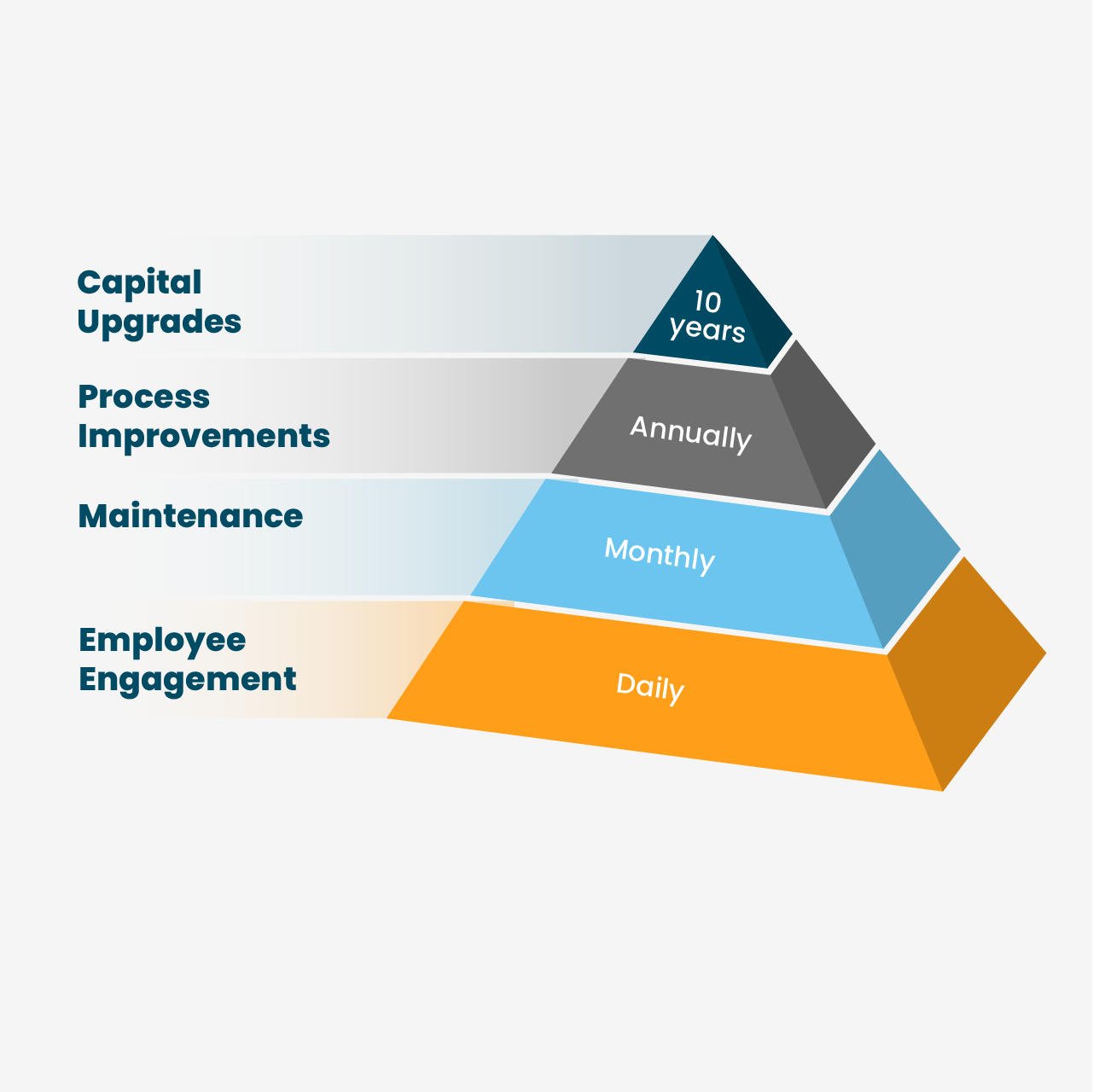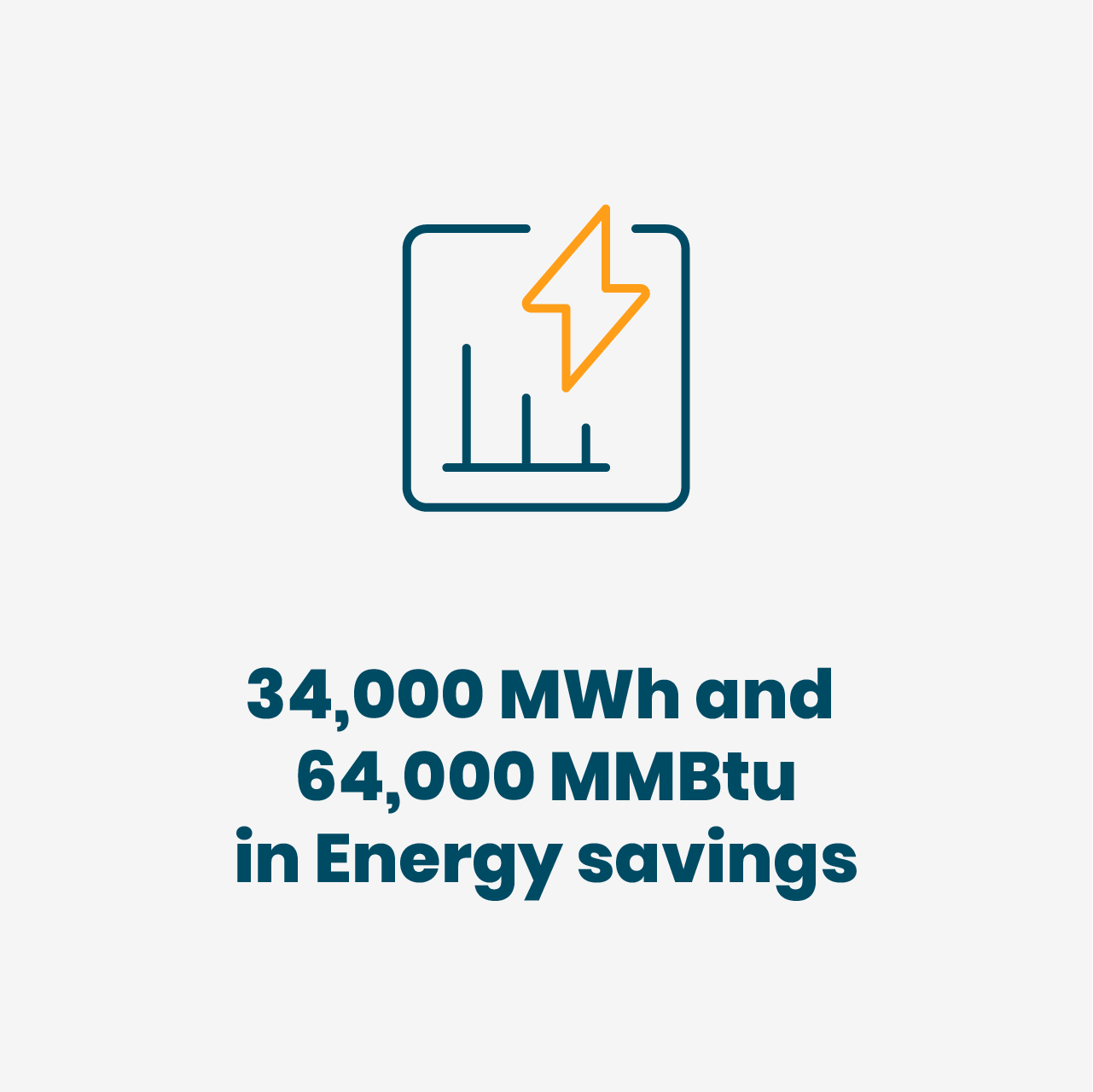How can strategic energy management help reduce energy costs with low and no-cost measures?

The Challenge
Nearly three-quarters of the electric energy efficiency potential in New York State is in business and industry. So, meeting New York’s goal to reduce greenhouse gas emissions by 40% from 1990 levels requires energy efficiency improvements in industrial operations.
The Solution
Recognizing the value and widespread impact of a Strategic Energy Management (SEM) approach, NYSERDA hired VEIC and Cascade Energy to partner on developing a pilot program for large industrial energy customers in New York State. Services: Energy Efficiency
The Impact
With hands-on trainings, peer to peer information exchanges, and dedicated coaching, SEM makes energy efficiency an integral part of business operations. Participants in the pilot program have already seen up to 6.8% electric savings.
Big energy goals call for change at every level
The New York Climate Leadership and Community Protection Act of 2019 calls for a 40 percent reduction in greenhouse gas emissions from 1990 levels by 2030 and an 85 percent reduction by 2050. This translates to major clean energy advancements at every level. NYSERDA is a statewide organization providing objective energy analysis, research, and energy efficiency pilots. Working in partnership with utilities, NYSERDA is a crucial part of achieving these state energy goals. The business and industry sector in New York State holds huge energy savings potential, making it an important lever to pull.
Energy efficiency takes shape in many ways. Often, we think of it as advancements in technology and new pieces of equipment, but there is a human behavior component of efficiency that can add up to a lot of savings. At most large institutions everyone consumes energy, but only a few are accountable for the costs.
Strategic Energy Management (SEM) is an approach that ensures energy efficiency becomes an integral part of organizational culture. By leveraging insights from behavioral science, employees are engaged in solutions to lower costs. It puts the power to control energy into every employee’s hands.

VEIC has been implementing SEM programs since 2014 and was hired by NYSERDA to bring our expertise to New York. Partnering with Cascade Energy, an energy management services company, we developed an SEM pilot program for industrial energy customers.
Accumulating savings for New York businesses
The potential savings that can come from engaging industrial plant staff in energy management is enormous. Energy equals money, and New York’s industrial sector spends approximately $20 billion a year on energy. SEM is a continuous improvement approach to reducing energy intensity over time. And while it helps to identify the need for energy efficient upgrades like equipment replacements, it places greater emphasis on identifying how energy is used. SEM connects the technical aspects of energy use with organizational operations to implement efficiency opportunities faster, which can lead to even greater savings.
“This program delivers savings almost immediately. But it goes beyond that. Ultimately, the goal is to see far greater savings once the culture of energy has been altered such that it’s part of everyday operations. ”
SEM requires a commitment from company leaders to make beneficial changes, a clear energy management plan, and ongoing measurement, tracking, and reporting. VEIC’s expertise in the SEM field comes from years of experience as the administrator of Efficiency Vermont. Through this work we’ve engaged with many commercial and large industrial operations, including:
- Aircraft parts manufacturers
- Battery manufacturers
- Dairy manufacturers
- Food manufacturers
- Hospitals
- Paper mills
- Plastic injection molding facilities
- Ski areas
- Colleges and universities
- Wastewater treatment facilities
While the products and services these businesses offer are diverse, we are adept at making customizations and maintaining the effectiveness of the SEM model.

Since 2017, 23 industrial customers and 14 wastewater customers have participated in the New York SEM program. Participant surveys have shown overwhelming satisfaction. Energy savings from the industrial and wastewater cohorts in 2017 and 2018 are estimated to total more than 34,000 MWh and 64,000 MMBtu.
The cohort approach brings added value
VEIC and Cascade Energy have worked with five cohorts since the pilot started. We analyzed participants’ energy and production data and created maps to identify where energy is consumed. Our energy models tracked progress and identified where operations were working efficiently and where there was opportunity for improvement.
We provided training, coaching, technical support and conducted “energy treasure hunts” at customer sites. Including employees from each facility throughout this process helped to foster engagement from the start. This approach achieves quick wins and brings immediate value to the cohort participants while also building a pipeline of future energy projects.
By bringing multiple facilities of the same type together into a cohort, we create an opportunity for peer to peer exchange. The participants learn together and share ideas. They see how their operations differ and find new ways to approach the challenges in their facilities simply by observing and talking to each other. One of the first cohorts in the New York pilot program consisted of 9 wastewater treatment facilities. Each of the facilities is expected to save 5 to 7% initially, with the potential for more savings down the road.
“We found 5% just by going through this program, doing nothing, no cost to us. I’m anticipating finding another 5%. ”
A collective commitment to SEM
When SEM is extended beyond a single person’s role to a broader team commitment, it ensures persistence over time. Focusing on learning by doing and creating a program that engages multiple employees at a facility allows SEM to become business-as-usual and remain in place long after a pilot ends and people change jobs. As a result, businesses can become their own energy experts and meet their goals.
This has been an iterative process for VEIC, and we are constantly evaluating to make sure that our methods for measurement and engagement meet our client and partner needs. We’re looking ahead to the next two years to broaden the impacts of SEM in New York State and beyond.



